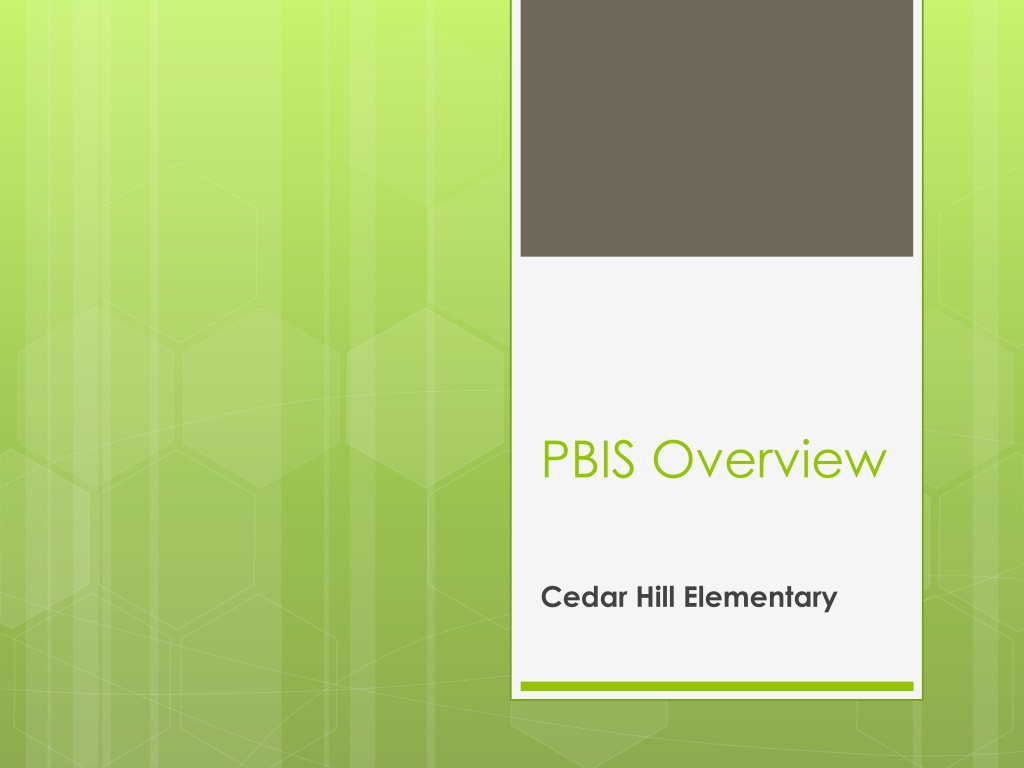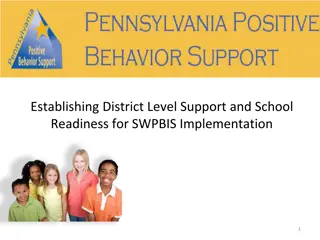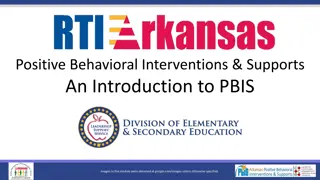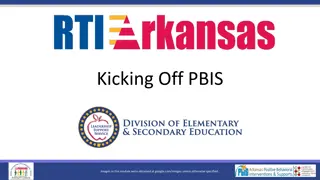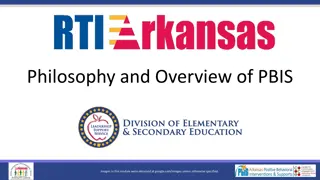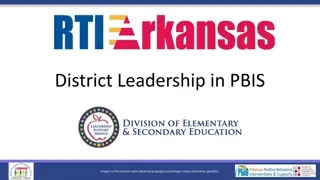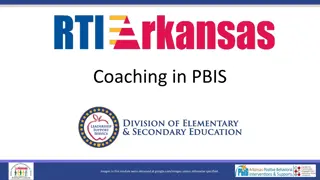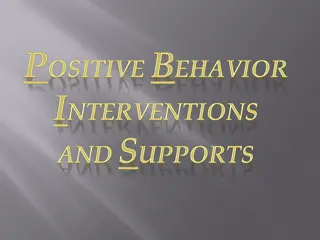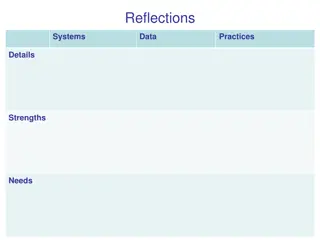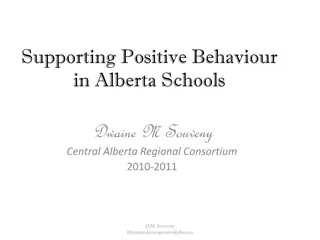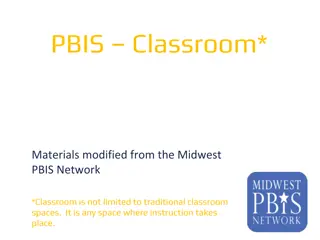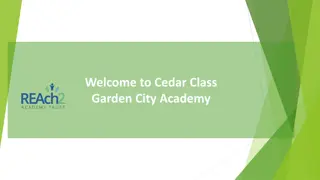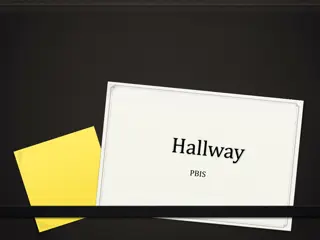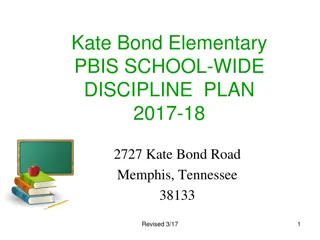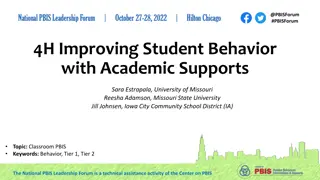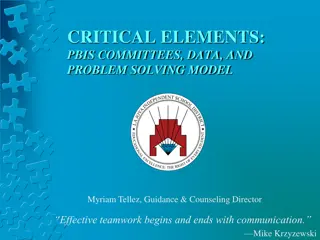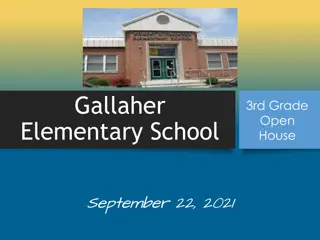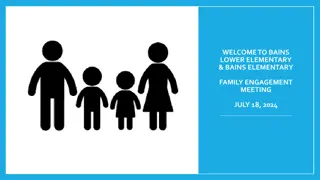Understanding PBIS: Positive Behavior Supports at Cedar Hill Elementary
Explore the Positive Behavioral Interventions and Supports (PBIS) program at Cedar Hill Elementary through an informative presentation covering the program overview, purposes, principles, components, and mission statement. Discover how PBIS fosters a positive school environment by promoting expected behaviors, teaching social skills, and utilizing a three-tiered prevention model. Learn how Cedar Hill students, staff, and families are dedicated to achieving academic and behavioral success through a proactive and data-driven approach.
Download Presentation

Please find below an Image/Link to download the presentation.
The content on the website is provided AS IS for your information and personal use only. It may not be sold, licensed, or shared on other websites without obtaining consent from the author. Download presentation by click this link. If you encounter any issues during the download, it is possible that the publisher has removed the file from their server.
E N D
Presentation Transcript
PBIS Overview Cedar Hill Elementary
Purposes of Presentation To provide an overview of Positive Behavioral Interventions and Supports (PBIS) To review the Cedar Hill Matrix and school-wide behavior expectations To review our procedures for rewards and consequences
What Is Positive Behavior Support? PBS is a broad range of systemic and individualized strategies for achieving important social and learning outcomes while preventing problem behavior. OSEP Technical Center on Positive Behavioral Interventions & Supports www.pbis.org
In Other Words School-wide Positive Behavior Support is a district or school s process for teaching expected social and behavioral skills so the focus can be on teaching and learning.
Principles That Guide SW-PBS Focus on discipline for academic & behavior success Is for all students, all staff, and all settings Emphasizes prevention Uses research-validated practices Is coordinated by a SWPBS team Emphasizes an instructional approach Uses data to guide decisions
Cedar Hills PBIS Components Universal procedures Proactive to prevent problem behavior Data Fluid Implementation of social skills lessons A lot of teaching Consistency throughout the school
Comprehensive, Integrated, Three-Tier Model of Prevention (Lane, Kalberg, & Menzies, 2009) Goal: Reduce Harm Specialized Individual Systems for Students with High-Risk Tertiary Prevention (Tier 3) Goal: Reverse Harm Specialized Group Systems for Students At-Risk Secondary Prevention (Tier 2) PBIS Framework Goal: Prevent Harm School/Classroom-Wide Systems for All Students, Staff, & Settings Positive Action; Social Skills Improvement System Primary Prevention (Tier 1) Social Academic Behavioral
Cedar Hills Mission Statement Cedar Hill students, staff, and families are committed to ensuring high levels of learning for all students and providing a positive, safe, and consistent climate that promotes student character.
Cedar Hills Vision Statement We are a professional learning community of students, educators, and parents recognized for the excellence of our safe, student-centered environment, the character of our students and staff, and the involvement of parents and community partnerships. We have an unwavering commitment to engage in meaningful collaboration with peers, parents and students to: discover and implement the best research-based practices, analyze student data; and make informed decisions about differentiated instruction and student learning. Students actively engage in hands-on learning, utilize technology on a daily basis, and achieve individually at their highest level as lifelong learners who are prepared for a globally diverse society.
Positive School-wide Expectations Be Safe Be Respectful Be Responsible
Clear Set of Behavior Expectations = School-wide Expectations Matrix A comprehensive list of expectations Agreed upon expectations of all students & all staff Based on data and behavioral concerns Becomes basis for consistent language to use with students See Matrix + weekly lesson plan!!!
What Are Procedures & Routines? Procedures explain the accepted process for carrying out a specific activity, such as: Walking in the hallway Riding the bus Using the playground Attending an assembly Going to the restroom Procedures form routines that help students meet expectations.
The Science of Behavior Students are not born with bad behaviors Students do not learn better ways of behaving when given aversive consequences To learn better ways of behaving, students must be directly taught the replacement behaviors To retain new behaviors, students must be given specific, positive feedback and opportunities to practice in a variety of settings
Teaching Non-Classroom Procedures & Routines Review and/ or practice steps prior to going to the setting In the setting Review steps Have one student model while others watch and give feedback Have all students practice
Components of an Effective Lesson Plan 1. Tell 2. Show 3. Practice 4. Feedback 5. Reteach
How to Effectively Encourage? Clear and specific Sincere and appropriate for student s age Avoid comparison/competition between children
When to Effectively Encourage? Contingent on desired behavior Applied immediately Frequent encouragement during acquisition when students are learning a skill
What to Encourage Expectations and rules from your school-wide expectations matrix.
Classroom Reinforcement System 4:1 Verbal specific feedback Classroom reward system (individual to each teacher) Clip Chart utilized Skyhawk tickets (to reinforce lessons and school-wide matrix)
School-wide Reinforcement System Skyhawk Star Charts Weekly ticket drawings for a prize Skyhawk Spin or Plinko
Examples of Specific, Positive Verbal Feedback Thank you for walking in the hallway. That was being safe. Way to go, you had your homework finished and you turned it in on time. That is being responsible. You are using an inside voice in the cafeteria. That is respectful.
Cedar Hill - Tier 2 Supports More intense services for students who are not responding to the school-wide universals Teacher nomination form identifies students Interventions include: Social Skills lessons with the counselor, Check-in / Check-out, etc.
Consequences Reminders Clip Down on clip chart Safe Seat and Buddy Room Think Sheets- take accountability Office referral
